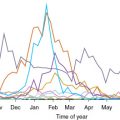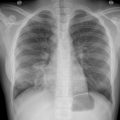Vaccination has repeatedly been acknowledged as one of the most important tools for reduction of mortality worldwide and one of the most cost-effective ways to decrease health care–related costs. Immunocompromised children are at higher risk of complications caused by vaccine-preventable pathogens; however, it has been recurrently demonstrated that they are undervaccinated. , This can be linked to several factors, such as an overlooked priority in an already very sick child, uncertainty about the proper timing for vaccines, false impression about the effectiveness of immunization in immunocompromised hosts, young age at the beginning of hospital care, or the fear of side effects, especially for live-attenuated vaccines. Current guidelines provide a framework to approach vaccination before and after transplantation and during chemotherapy. However, evidence on vaccination in the immunocompromised hosts, especially in the pediatric population, is often lacking, and if available the quality of evidence is grades II or III. When available, data are mainly from adult studies and are limited with regard to pediatric-specific recommendations. Additionally, there are few prospective randomized controlled trials to determine vaccine efficacy, optimal timing of vaccine administration, predictors of vaccine immunogenicity, or correlates of protection in these vulnerable pediatric populations. Consequently, despite published recommendations, immunization of these at-risk hosts is variable and often suboptimal and needs to be improved. ,
Routine childhood vaccines are provided mostly by the primary care physician; however, for transplant recipients and oncology patients, there can be variability in where these patients receive their vaccination (e.g., transplant centers physicians or with oncology centers). Therefore ensuring appropriate communication and documentation between both groups is paramount to optimiz vaccine administration and to avoid missing opportunities for vaccination.
General considerations
Vaccination history
Vaccination history should be evaluated early in the transplant process, and when feasible, prior to transplantation. Serology testing to document antibody response can be considered in cases of uncertain vaccination history, uncertain but if done should be before immunosuppression to assist with the catch-up vaccination program.
Vaccine administration before immunosuppression
As a general rule, vaccination and updating vaccination should be performed when feasible before planned immunosuppression and transplantation. This is obviously easier in solid organ transplant (SOT) recipients, as well as in older children for whom booster doses could be sufficient. For optimal efficacy the window period vaccination is 2 weeks for inactivated vaccines and 4 weeks for live vaccines before the initiation of immunosuppression.
Protective titer levels
Although there is a clear benefit of full vaccination before treatment, the waning of antibodies and subsequent insufficient protection is unpredictable. Hence, it is useful to measure antigen-specific serology levels at least 2 weeks (preferably 4 weeks) after vaccination. Many factors affect the ability to produce protective antibodies, including the type of primary disease, type and level of immunosuppression therapy, concomitant infections, organ failure, genetic factors, and previous immune status.
Window of time between intravenous immunoglobulins, blood products, and vaccine administration
Receipt of intravenous immunoglobulins or other blood products does not significantly affect the immune response to inactivated or toxoid vaccines. In contrast, they can interfere with the response to live attenuated vaccines, especially measles, mumps, rubella (MMR) and varicella-zoster (VZV) vaccines, as they may contain significant amounts of specific antibodies that limit the expansion of vaccine virus production after vaccination and, accordingly, the immunologic response. The window of time for delaying vaccines—ranging from 3 to 11 months—depending on the dose of intravenous immunoglobulins and/or which specific blood products are given.
Donors and contacts of immunocompromised host
Donors should be up-to-date for currently recommended vaccines based on age, vaccination history, and exposure history according to the most current vaccine guidelines. However, administration of live attenuated vaccines should be avoided within 4 weeks before stem cell harvest or organ donation. Vaccination of the donor for the benefit of the recipient is not routinely recommended at this time.
Health care workers and close contacts, such as family members who are in frequent contact with immunocompromised patients, should be fully immunized. The pretransplant evaluation period is the ideal time to review immunization and to ensure that all caretakers and siblings are up-to-date and fully immunized, including for influenza during season and hepatitis A and B. When both inactivated or live attenuated vaccines for the same disease are available, the inactivated form is preferred to avoid prolonged shedding and risk for the candidate.
Live attenuated influenza vaccine can be given if it is the only available option with good use of infection prevention precautions for a 2-week period after vaccination. However, it is contraindicated in the case of household individuals who live with hematopoietic stem cell transplantation (HSCT) recipients within 2 months after transplant or those with active graft-versus-host-disease (GVHD). In case of administration, close contact between the immunocompromised patient and household members should be avoided for 7 days.
Close contacts of immunocompromised hosts should not receive smallpox or oral polio vaccine. However, other live vaccines are encouraged in this group to prevent patients who have undergone transplantation from having contact with wild-type viruses (e.g., MMR and varicella). If a close contact develops cutaneous lesions after varicella vaccine, they should avoid contact with the immunocompromised host until the lesions clear.
In addition, although infants in the household can receive rotavirus vaccines, the immunocompromised patient should avoid handling diapers for 4 weeks after vaccination. Pets should also be fully immunized.
Solid organ transplantation
Pretransplantation vaccination
Pretransplant assessment of SOT candidates always includes reviewing their vaccination and vaccine-preventable disease histories. For infections that are well recognized, such as typical chickenpox, a history is generally sufficient to establish seropositivity. However, for other diseases, such as measles or pertussis, recall of disease is often misleading. The main concept is that candidates should be up-to-date with vaccinations for their age at the time of transplantation according to local recommendations and epidemiology. , Both inactivated and live attenuated vaccines should be administered as early as possible to increase the likelihood of better immunologic response, which may be diminished by end-stage organ disease. Ideally, vaccines should be given at least 2 weeks (inactivated vaccines) to 4 weeks (live attenuated vaccines) before SOT to allow for immune response. , Vaccine titers should be monitored at least at the time of assessment but ideally should be repeated just before SOT if there is a significant time gap between the two events to evaluate risk or document protection. Specific serologic results that could be measured include the following vaccines: tetanus, Haemophilus influenzae type b for children younger than 5 years of age, Streptococcus pneumoniae , hepatitis A, hepatitis B, varicella, MMR, and when relevant, rabies.
In children without prior vaccination or with an incomplete vaccination history, it can sometimes be difficult to prioritize which vaccine should be given first. It is worth highlighting that several vaccines can be given at the same time, including live attenuated vaccines. Live attenuated vaccines must be given either at the same time or 1 month apart. There is no such rule for inactivated vaccines, which can be given either on the same day or on any consecutive days. The age of the child, the number of vaccine doses already received, and the season should be considered when prioritizing which vaccine to administer first, as well as additional risk factors, such as outbreaks or local epidemiology. Nevertheless, these factors should all boil down to evaluating the risk of infection for the candidate.
For inactivated vaccines, influenza vaccine (when in season), pneumococcal vaccine, and hepatitis A and B vaccines should be prioritized. Next, a combination vaccine, including tetanus, diphtheria, pertussis, polio with or without H. influenzae type b, as well as meningococcal vaccine should be next. Other inactivated vaccines, such as human papillomavirus (HPV), rabies, tick-borne encephalitis, and so forth can be administered as a third tier.
For live-attenuated vaccines, the combination vaccine MMR should be the first priority or rotavirus vaccine (depending on age), as no specific treatments are available for the viruses they protect against and there is a high risk of severe outcome if disease occurs after transplantation. MMR can be given as early as 6 months of age for patients at risk of transplantation. A second dose is usually administered as early as 4 weeks after the first dose. If vaccination was started before 1 year of age and the second dose was also administered before the first year of life, a third dose should be given.
Varicella vaccine should be given if the child is seronegative; this can be administered on the same day as MMR vaccine or with an interval of 1 month. It is usually recommended after the first year of life because of possible interference with maternal antibodies but can be administered at 9 months of age if SOT is considered, with a second dose at least 4 weeks later. If seroconversion did not occur, a third dose should ideally be given before SOT if time allows.
Rotavirus vaccination of infants awaiting SOT is more controversial and data are lacking. In theory it could be given before SOT to infants younger than 6 months old. However, prolonged viral stool shedding, particularly with the first dose, is well recognized and therefore may not be ideal in an upcoming SOT setting.
Posttransplant vaccination
General considerations.
At least 3 months after SOT when the child’s condition is clinically stable and with baseline low immunosuppression, it is important to repeat the specific serologic tests for vaccine-preventable diseases. At this time, antibody waning or loss of seroprotection should be noted and a new plan for giving booster doses established. This process should be repeated regularly—for example, yearly at follow-up visits.
The optimal time to start immunizing after SOT is unclear. However, the type and amount of immunosuppression may modify the capacity to elicit protective vaccine responses. Therefore it is important to check seroconversion at least 4 weeks after immunization for those vaccines for which assays are available and protective levels are known. Although specific antibody levels may not be sufficient for ensuring full protection, they are used as surrogate markers.
Inactivated vaccines.
Most centers give inactivated vaccines 3 to 6 months after SOT if immunosuppressive drugs are stabilized at a low level, to ensure the best possible immune response ( Table 9.1 ). The decision to vaccinate should be based on the necessity (antibody titers below the protective threshold, exposition to disease, local epidemiology), the age, and the evaluation of the capacity for immune response. This chapter reviews the available data on select inactivated vaccines.
| Antigen | Before SOT | After SOT |
|---|---|---|
| Inactivated, Engineered Vaccines | ||
| Diphtheria | Yes | Yes |
| Tetanus | Yes | Yes |
| Pertussis | Yes | Yes |
| Polio | Yes | Yes |
| Haemophilus influenzae type b | Yes | Yes |
| Streptococcus pneumoniae, conjugated vaccine | Yes | Yes |
| Neisseria meningitidis , quadrivalent preferably | Yes | Yes |
| Hepatitis A | Yes | Yes |
| Hepatitis B | Yes | Yes |
| Influenza | Yes | Yes, yearly |
| Human papillomavirus | Yes | Yes |
| Rabies | At risk * | At risk * |
| Japanese encephalitis | At risk * | At risk * |
| Tick-borne encephalitis | At risk * | At risk * |
| Typhoid (Vi) | At risk * | At risk * |
| Cholera | At risk | At risk * |
| Anthrax | No | No |
| Live Attenuated Vaccines | ||
| Measles | Yes | No † |
| Mumps | Yes | No † |
| Rubella | Yes | No † |
| Varicella-zoster | Yes | No † |
| Zoster (not for children) | — | — |
| Rotavirus | Yes | No |
| Influenza | Inactivated preferred | No |
| Polio (oral) | Inactivated preferred | No |
| Yellow fever | At risk * | No |
| Typhoid (Ty21a) | Inactivated preferred | No |
| Bacille Calmette-Guérin | No † | No |
| Smallpox | No | No |
* At risk depends on the local epidemiology, travel to specific at risk countries, and the age group.
Stay updated, free articles. Join our Telegram channel

Full access? Get Clinical Tree






